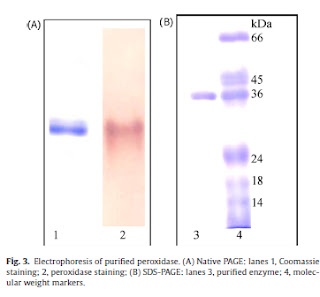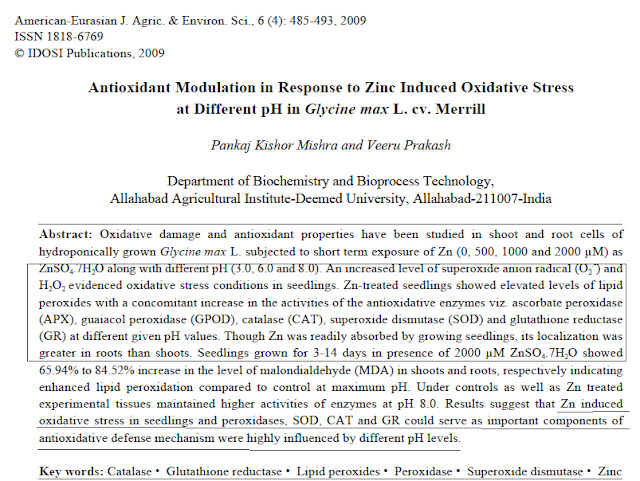What would the connection be between ROS in human cells and catalase from black gram as an enzymatic defense against ROS-mediated oxidative stress? The authors imply that catalase in legumes can enter the gastrointestinal tract and get absorbed, intact, into the cells of the body to scavenge ROS?
The authors use Seph 4B-IDA-Zn(II) to purify the catalase. Is there one band in lane 2 or are there bands very close to the middle band? Could they have done HPLC or used some other method to show the purity of that component in lane 2? Contrast to the paper by Ajila and Rao also given below.
Ajila and Rao's paper:
Purification in this paper involves ion exchange chromatography on DEAE-Sephacel and gel filtration chromatography on Sephadex G100.
Their gels show a single band (real purification!) though the brightness is quite high.
But they show the purity of their protein by doing HPLC and capillary electrophoresis. Important in a chromatography journal to demonstrate the success of the chromatography done.
Back to Kandukuri et al, they test inhibition of catalase with different metals and inhibitors, much like Ajila and Rao (Table 6 below). However, in spite of using Zn(II) for their IMAC, Kandukuri omit to test the effects of Zn(II) on catalase activity. Enzyme inhibition is not the only aspect of interest, induction of enzyme activity is also an important aspect to consider.
According to Ajila and Rao, ZnCl2 treatment actually gave 120% activity compared to a (normalised) 100% of control (untreated).
 |

Mishra and Prakash's paper:
Here too, it is shown that Zn-treatment causes accumulation of the metal in the roots accompanied by increased oxidative stress due to which antioxidant enzymes like peroxidases, SOD, catalase, GR etc are induced.
Bottomline: On the one hand, you have reviewers who hardly spend any time understanding any experiments in the manuscript and casually propose experiments that are either out of scope or are too much of an investment compared to the return that publication in that journal would give.
Here, however, some questions have not been asked by the reviewers.











No comments:
Post a Comment